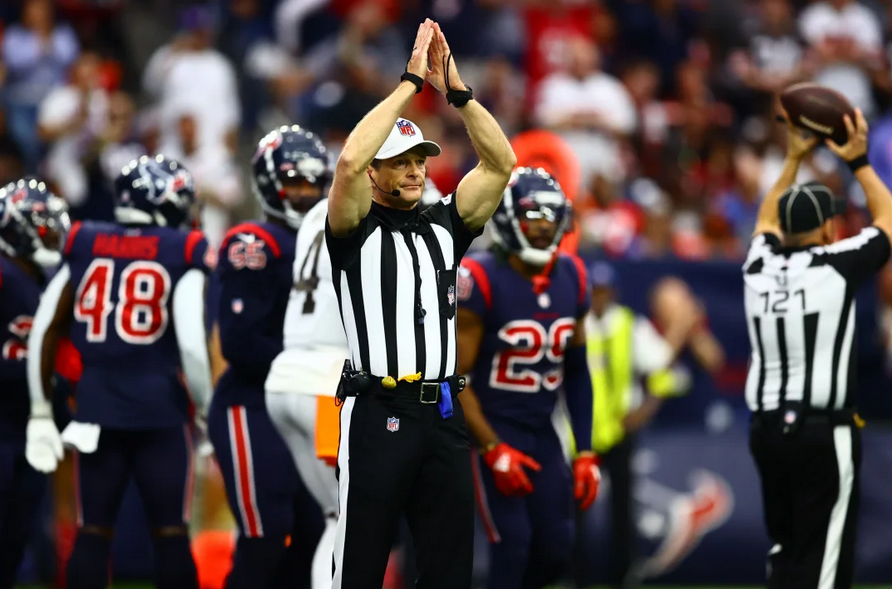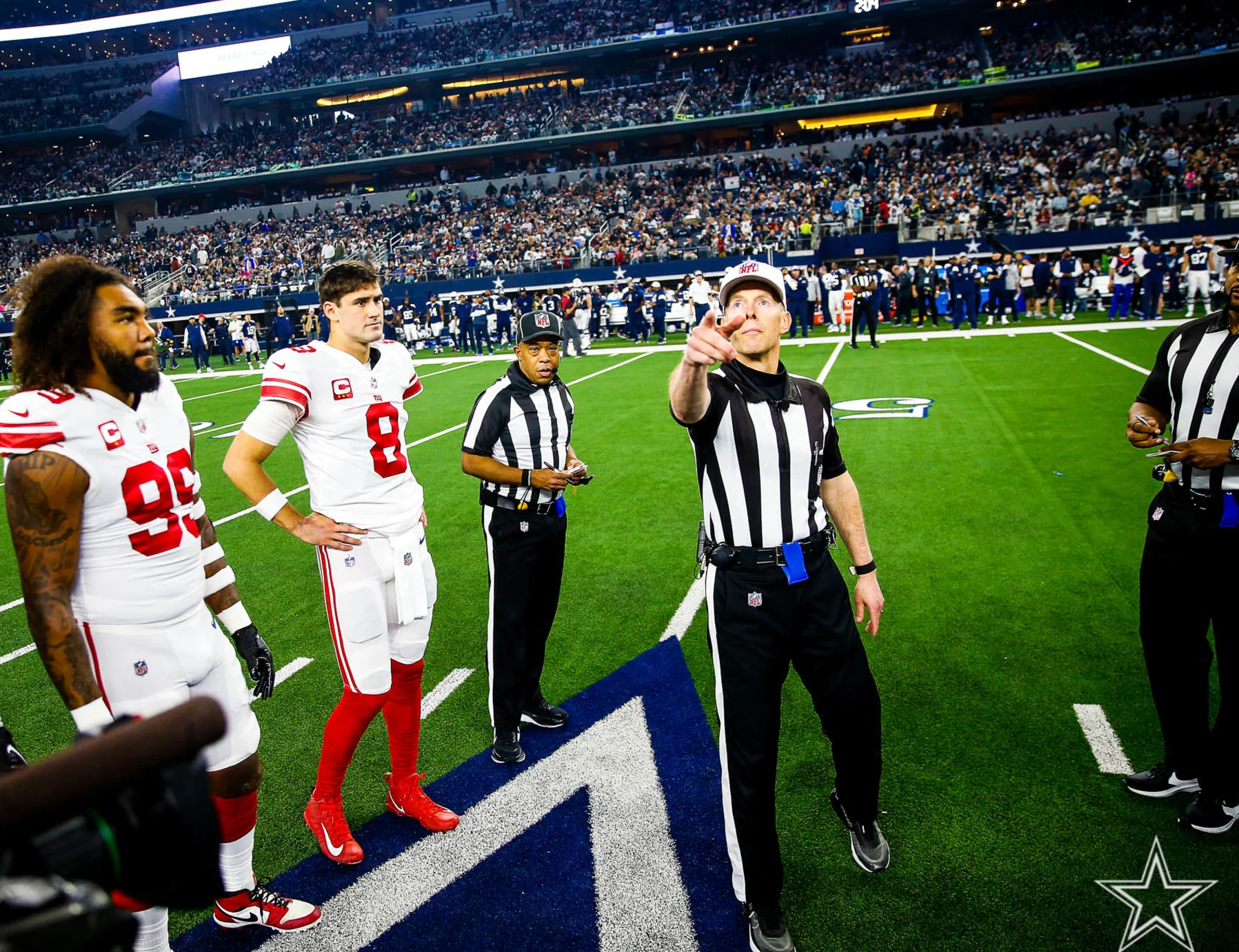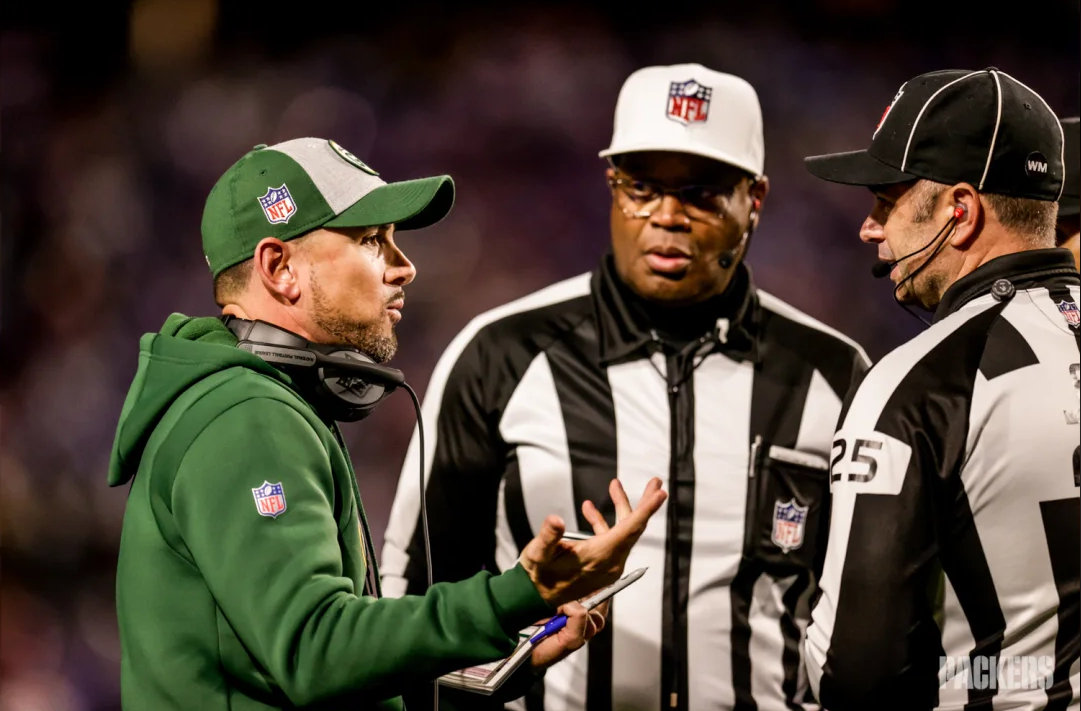2019 Preseason
Officiating video: use of helmet, blindside blocks, roughing the passer, and reviewing pass interference
In his first weekly officiating video, Al Riveron detailed plays from the Pro Football Hall of Fame Game that highlight this season’s biggest rule changes and points of emphasis.
In his first weekly video of the season, senior vice president of officiating Al Riveron discussed plays from last week’s Pro Football Hall of Fame Game that covered the most notable rules changes and points of emphasis from the offseason.
Use of the helmet (UOH)
Riveron highlighted two plays that show the use of the helmet foul on both sides of the ball. In the first play, a Broncos defender came in and hit a Falcons runner, while leading with his head. This is a foul since the defender lined up his opponent, lowered his head, and initiated contact with the crown of his helmet. It is a foul regardless of where on the body the person receiving the contact is hit.
In the second play, the roles were reversed, as the same Falcons running back was involved with a play at the sideline where he lowered his head to contact a Broncos defender trying to pursue him. This is also a foul since the runner lowered his head to initiate contact to his opponent, and such contact was avoidable. There are instances where a runner can lower his head to ward off contact, but here, the act of lowering his head was not to protect himself, but was to initiate contact and forcibly hit the defender in pursuit.
Riveron also pointed out on the latter of the two plays, that the Denver defender also lowered his head to initiate contact on the runner in the same illegal manner. He explained that this is a very possible occurrence and there would be a foul on both the runner and defender in such a scenario. On the field, a flag was thrown on the runner only, but Riveron affirmed that there were actually fouls by both players on the play that should have offset.
Blindside blocks (BLI)
Riveron also used two special teams plays to illustrate what is and what is not a foul for an illegal blindside block. In the first play, on a kickoff, a member of the receiving team, while running toward his own end line trying to find someone to block, used his body to screen a kicking team player away from the returner. This is not a foul, as there was no forcible contact made by the receiving team player on the pursuing tackler.
In the second play, on a punt, a receiving team player, again moving toward his own end line, forcibly contacted a kicking team player to block him, but used his back in doing so. This is also not a foul. It is only a foul for an illegal blindside block if a player forcibly contacts his opponent using his forearm, shoulder, or head while running toward or parallel to his own end line. This means screen blocking and blocking using the hands or back are all examples of legal blocking.
Roughing the passer (RPS) vs. legal contact
In two more plays, Riveron explained how to legally contact a passer after he has released the ball. In both plays, the defender performed three major actions that will almost always ensure a legal takedown of the passing quarterback. Both defenders in the highlight plays first keep their head to the side, preventing forcible contact with the head on the passer. They then wrap the quarterback with both arms, and then when falling, make sure that most or all of their body weight lands away from the passer. If any or all of these three criteria are not followed, it could lead to a foul for roughing the passer.
There was some controversy in the early stages of last season regarding roughing the passer fouls. However, during training camp, referee Shawn Hochuli told Football Zebras that there were no adjustments to the interpretations during the offseason. “Roughing the passer is going to be exactly the same,†he said.Â
Reviewing pass interference
In perhaps the biggest blockbuster rule change of the offseason, the instant replay system can be used to correct any foul for pass interference, whether called on the field or not. The rules governing pass interference did not change, only its ability to be reviewed. Â The first challenge of defensive pass interference took place in the Pro Football Hall of Fame Game by Broncos head coach Vic Fangio.Â
On the play, the Denver defensive back held down the arm of the receiver, prompting a flag to be thrown by field judge Lee Dyer. As is the case with any other replay review, there must be clear and obvious visual evidence to warrant a reversal. On this play, since there was no clear and obvious evidence that the defender didn’t significantly hinder the receiver’s ability to catch the ball, the ruling on the field stood.Â
https://streamable.com/7zx9h




































